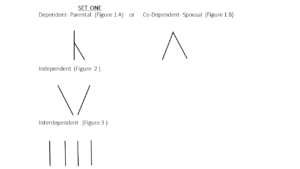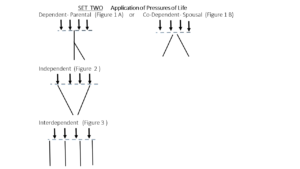Thinking About Real Love
Two Essential Elements of Love In God’s Image
I’ve had several opportunities recently to reflect on the subject of “love”.. mostly in regard to Advent themes and the love of God for us and the call for us to love God AND love our neighbor, even love our ENEMY! This is a hard task, especially given the variety of ways in which love is defined and thoughts about what loving behavior looks like. The more I have talked to families, individuals, other Christian teachers, and friends the more I have come to think of the kind of love that builds healthy and lasting relationships and inspires me. I define this way:
Unconditional Positive Regard/Consideration (UPR/C) + Accountable Fellowship (AF) = LOVE
(The kind of LOVE that can most closely approximate that which Christ modeled and that we call “agape”, the truest and most godly kind that humans can experience.)
Both components are necessary between beings to establish lasting and mutually satisfying relationships that can stand up to the call to a godly kind of love. The notion of UPR/C may not be exactly the same for everyone, however. For some, “unconditional” too often means only for this point in time and given the knowledge I have. If circumstances or additional information can change the positive regard/consideration that one holds for another in an adverse way then it is, by definition, NOT unconditional. It was predicated only upon the circumstances or conditions that were in place at the time it was first felt and identified as “love.” We are told that God has the purest and most steadfast kind of unconditional love for all of creation. Our ideal is that such pure and steadfast unconditional love would also exist between parents and children, between spouses, in relationships with other family members, as well as between life-long friends or among those who have strong shared bonding experiences (crises, war, long term educational training and problem solving, team-building, “doing life together”, etc.) These are the kinds of relationships that will stand the test of time and rise to the level of “No greater love can one have than to lay down his life for another.” That is unconditional.
“I love you so much I will die to secure your life.” One must think carefully about what THAT kind of love looks like. There are lots of ways to “lay down one’s life for another”, large and small sacrifices that will become necessary in relationships to assure both parties feel loved and affirm the desire of the other to feel loved. As the traditional wedding vows have put it, “for better or worse, for richer or poorer, in sickness and in health, forever and forever, as long as we both shall live.” Few really take that degree of unconditionality to heart in pledging their love to one another. Fewer still will likely really consider the fact that circumstances can and most likely will change!. It is the changeability that can occur within the multitude of conditions under which one entered into relationships that becomes the problem. “I didn’t expect THIS….. I am outta here!” And out the door walks “the love of my life.” Off the pedestal one or the other slips. An ideal (or idolatrous) picture one has held of her “perfect love” has been shattered. A BFF becomes last year’s occasional lunch partner. A sibling becomes someone to whom one never again speaks.
In addition to the UPR/C, there is another essential element: Accountable fellowship (AF). It can be described in terms of proximity and permanence over time so that a level of shared knowledge of one another leads to a bond of emotional, spiritual, and for role-defined and appropriately-boundaried relationships, a degree of physical intimacy that leaves both parties feeling confident about the safety, security, trustworthiness, and mutual good will and selflessness of each toward the other’s best interest. This demands an unquestioned degree of honesty and transparency with one another about all aspects of “doing life together” – finances, health, shared and individual interests and hobbies, goals, fears, shared values and compatibility of worldviews, as well as mutual commitment to processes for working through conflicts that arise as circumstances or needs/desires within the relationship change……. And they WILL!
Both elements – Unconditional Positive Regard/Consideration (UPR/C) and Accountable Fellowship (AF)- are necessary between beings to establish lasting and mutually satisfying relationships.
Basic Patterns And God’s Design for Relationships
There are three basic patterns of relationships that can be defined by structural aspects that are observed. The basic patterns are represented here in SET ONE. Each relationship pattern is defined in terms of the position, proximity, and degree of leaning upon, toward, away from, or standing adjacent to others.

Imagine what happens as the patterns’ various structures are subjected to pressures of daily life that test the strength of the individuals in the relationships. Like dominoes or houses made of cards, the structural integrity of the patterns begin to fall flat, Figure by Figure…..1 A…..1 B……2…….

Figures 1 A and B and Figure 2 are inherently unstable and not in keeping with God’s design for how we are to live. Figure 3……. the Interdependent Pattern….. has the structural integrity to not only bear the weight of daily life by disbursing it across the vertical “pillars” that are part of the broader, more stable structure, but it can also shelter individuals that are in a Dependent posture by virtue of age, physical disability, reduced mental capability, etc. (either temporarily or permanently) as in Figure 1 A’s leaning component. These might be children, elderly adults, or those with a disability or as the Bible often characterizes the vulnerable among us, “widows and orphans.” Such dependents can be taken into the interdependent structure and cared for by multiple “pillars” while they are nurtured, cared for, and assisted in taking an upright posture and joining the others who are part of the supportive “pillars.” The vertical “pillars” can adjust their positions closer or farther apart to balance out the weight and adjust for inclusion of dependents in need of support.
Summary
God is a relational being….. Father, Son, and Holy Spirit. God created us for relationship with the Divine Godhead and with one another, for communion….. to abide in community together. The pattern for relationships that was established from the beginning was the interdependent pattern. Triune God exists interdependently in perfect harmony, mutuality, and unity as the Godhead. The vertical posture of each line, representing and individual, is intended to be situated looking upward, straight to God, reaching for God, connected to and in communion with God. One’s identity is to be formed and aligned in that straight-up manner in relationship with God. As one seeks out others similarly aligned with their priority identity in relationship to God, then these human relationships will find their place adjacent to one another along a horizontal axis to create a larger “community” that is bound by accountable fellowship with God and one another. First and foremost in vertical interdependence with God, then in horizontal interdependent with all other relationships. This is God’s intentional will for relationships. Agape, or godly love, by its very nature is unconditional. God loves us. Period. Nothing will change it. Accountable fellowship, which is also an aspect of communion with God, is predicated on compliance with the demand for holiness that exists in order to abide in God’s presence. “Be holy as I am holy,” says God. If we are intentionally choosing to live in violation of God’s holiness, we are placing ourselves out of accountable fellowship with God, but never beyond his love. The love of Christ, as we learn to live it more and more in an agape, godly manner, will also have these requirements….. for unconditional regard/consideration and for accountable fellowship.
Since the intent was for God and created humanity to be in relationship, God also created a way for that to happen…. Through creating humankind in his own image with the spiritual capacity for the deep connection of communion with God and among people and also with establishing the formation of nuclear families and other institutions of connectedness among people. Father, Mother, and Divine….. three entities as a primary operating unit. Beyond that, there are additional forms as the structure grows and adds children and extended family (clan), tribe, nation, and beyond. All units branching out horizontally are related to one another in an interdependent pattern and in keeping with the shared understanding of the unconditionality of love, even when accountable fellowship is temporarily broken. Restoration of the fullness of the communion is predicated on acceptance of the criteria for mutual accountability between people. Our restoration of the communion with God is predicated on our holiness, which is restored through contrition, confession, and repentance before God and which moves us back into alignment with the demand for holiness before God for fellowship and back into community with others who are in that position, too.
The formation of the church by Christ as a permanent “body” within which his Holy Spirit would dwell is another example of interdependent relationships, integrated vertically and horizontally – according to congregations, episcopal areas or association groups, denominations, ecumenical communions, and the global, worldwide community of believers, all commissioned by and with the power of the Holy Spirit, who is The Lord, and able to stand with God and one another in the face of whatever pressures come.
![MPj04389070000[1]_phixr](http://disciplerofself.com/wp-content/uploads/2015/03/MPj043890700001_phixr.png)
